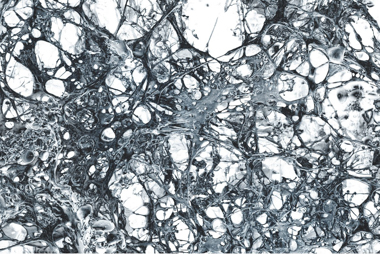Knead To Know: The Secrets of Gluten, Revealed
WIRED—October 14, 2017

IF YOUR HOMEMADE country loaf comes out of the oven shrunken and dense, you may have neglected a central tenet of breadmaking: Hydrate the flour. When you knead the dough, you are massaging moisture into the wheat’s proteins, creating a matrix of gluten that traps gases so the bread can inflate from the inside. “The gluten structure is stretchy but impermeable,†says Nathan Myhrvold, the tech millionaire, chef, and creator of 2011’s six-volume science-of-cooking megawork, Modernist Cuisine. Now, Myhrvold and his team of food scientists and photographers are back with five more volumes, focused exclusively on bread.
The photos in the $625 labor of loaves, ÂModernist Bread, range from cross-sections of rising sourdough to artful, side-lit layers of injera. But so much about baking, as any practitioner worth their pinch of salt will tell you, takes place at the invisible-to-the-eye chemical level, and Myhrvold wanted to expose that hidden process.
For the image above, his crew rinsed a small ball of dough with water to wash away starch granules and water-soluble proteins, leaving behind a blob of near-pure gluten. Then, using a scanning electron microscope borrowed from Myhrvold’s company, Intellectual Ventures, they captured a slice of the gluten magnified to 734X, tweaking the contrast of the black-and-white image to give maximum visibility to the webby network at the heart of every perfectly quenched, ready-to-bake gob of pre-bread. As Myhrvold puts it, “That web makes wheat breads what they are.†Meaning: chewy, delicious, and upsetting to gluten-sensitive stomachs everywhere.
Read the story here in WIRED.
PHOTO: The Cooking Lab, LLC.